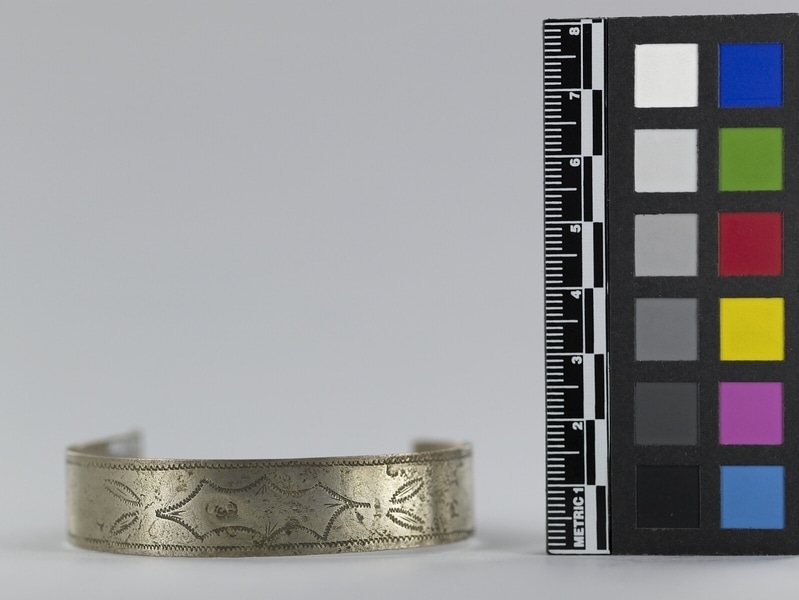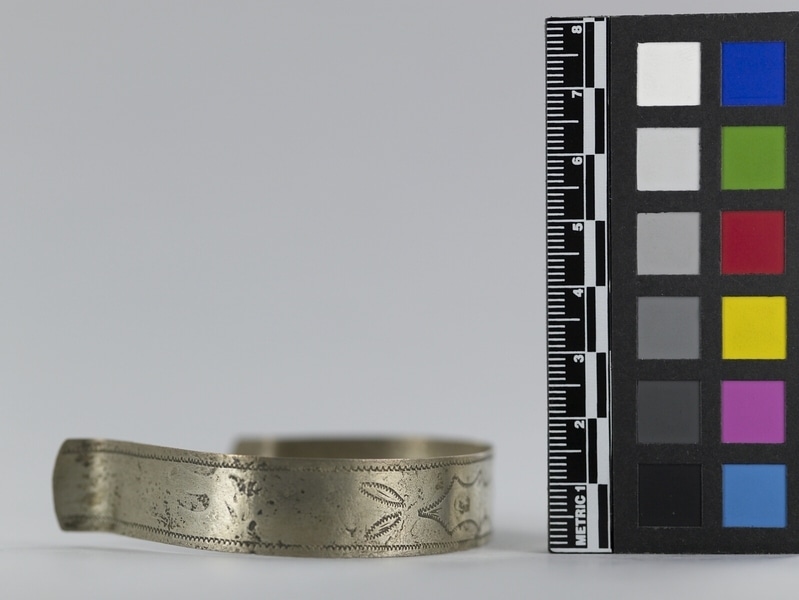Band Item Number: 1590/273 from the MOA: University of British Columbia



Description
Curved wristband, the ends of which are turned outward. Scalloped design in centre ressembling a holly leaf, flanked by leaves. Zigzag border top and bottom. Cartouche within central design.
History Of Use
Silver ornaments represent an important part of early exchange between Europeans, including fur traders, and First Nations peoples, especially in eastern and central Canada and the U.S.A. Initially, the main source of silver was British, French and Spanish coins. Most ornaments were produced by silversmiths of European origin in North America and Europe, and were actively traded only from 1760 to 1821. By the mid-18th century silver objects were produced in New England, Quebec and Montreal. Silver was used by First Nations peoples as a sign of rank. Silver ornaments in these styles continue to be produced by native silversmiths in central Canada and the U.S.A.
Specific Techniques
Rocker engraving is a freehand technique. Irregularity is characteristic.
Cultural Context
trade; personal decoration; status
Item History
- Made by Charles David Bohle (Maker) in Montreal, Quebec, Canada ? between 1760 and 1821
- Owned by Kathleen E. Reif before September 9, 1993
- Received from Kathleen E. Reif (Donor) on September 9, 1993
What
Who
- Culture
- Eastern Woodlands
- Creator
- Charles David Bohle (Maker)
- Previous Owner
- Kathleen E. Reif
- Received from
- Kathleen E. Reif (Donor)
Where
- Holding Institution
- MOA: University of British Columbia
- Made in
- Montreal, Quebec, Canada ?
When
- Creation Date
- between 1760 and 1821
- Ownership Date
- before September 9, 1993
- Acquisition Date
- on September 9, 1993
Other
- Item Classes
- metalwork
- Condition
- fair
- Current Location
- Case 45
- Accession Number
- 1590/0273